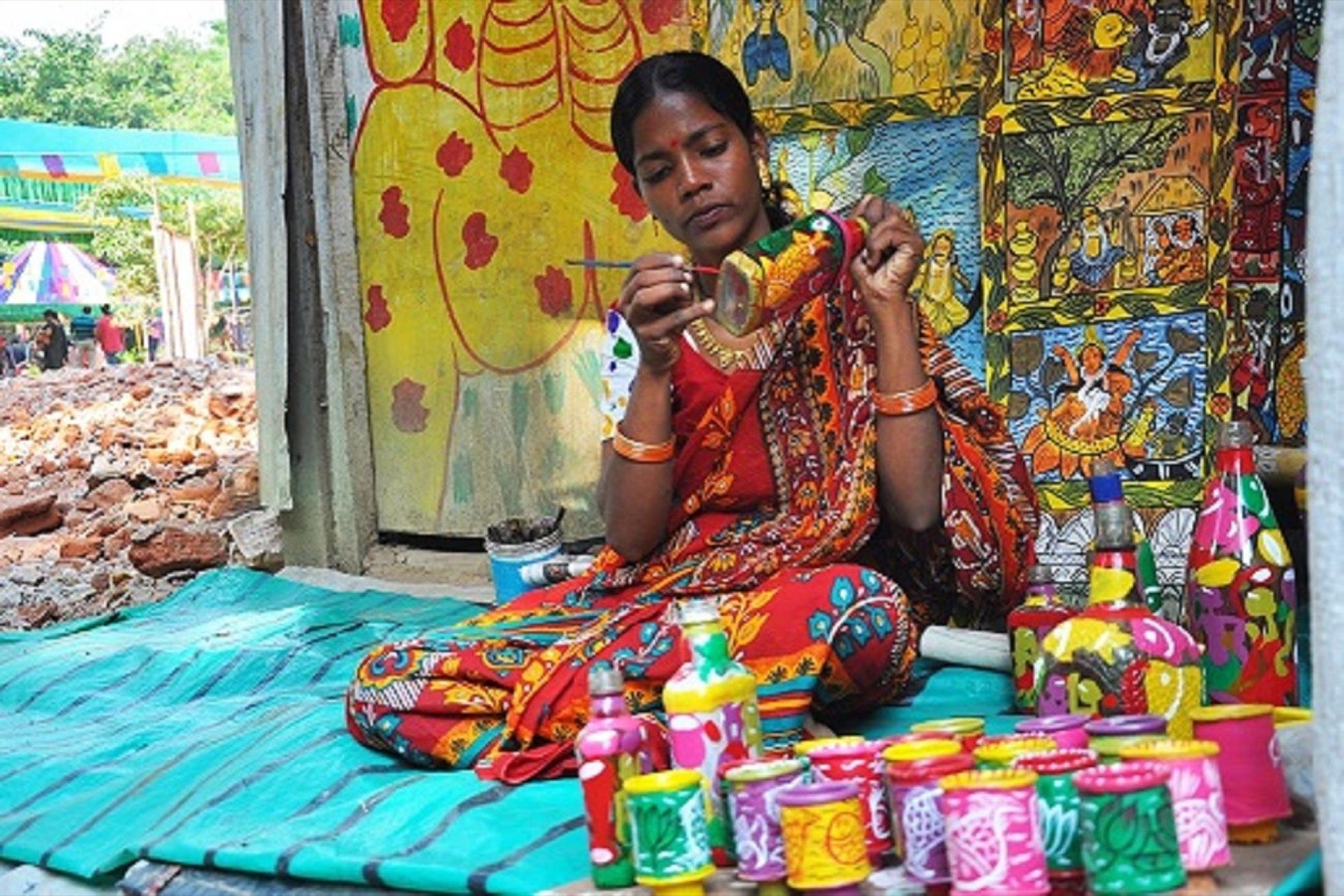
-
Table of Contents
Preserving Heritage, Empowering Communities
Tourism and traditional crafts play a crucial role in supporting artisan communities around the world. As travelers seek authentic experiences and unique souvenirs, they contribute to the preservation and promotion of traditional crafts. By engaging with local artisans, tourists not only support their livelihoods but also help to sustain cultural heritage and craftsmanship. This symbiotic relationship between tourism and traditional crafts fosters economic development, cultural exchange, and the preservation of artisanal skills for future generations.
The Impact of Tourism on Traditional Craft Communities
Tourism and Traditional Crafts: Supporting Artisan Communities
The Impact of Tourism on Traditional Craft Communities
Tourism has become a significant driver of economic growth in many countries around the world. As more and more people travel to explore new destinations, they seek authentic experiences that allow them to immerse themselves in the local culture. This growing demand for authenticity has had a profound impact on traditional craft communities, providing them with new opportunities for economic development.
One of the most significant ways in which tourism has impacted traditional craft communities is by creating a market for their products. Tourists are often drawn to the unique and handmade items that these communities produce, recognizing their cultural and artistic value. This increased demand has not only allowed artisans to sell their crafts at higher prices but has also provided them with a stable source of income.
Moreover, tourism has played a crucial role in preserving traditional crafts and passing them on to future generations. As artisans see the economic potential in their craft, they are more motivated to continue practicing and refining their skills. This has helped to prevent the loss of traditional knowledge and techniques that might have otherwise been forgotten over time.
In addition to economic benefits, tourism has also brought about social and cultural advantages for traditional craft communities. As tourists visit these communities, they often engage with artisans, learning about their craft and the cultural significance behind it. This interaction not only fosters a deeper appreciation for the craft but also promotes cross-cultural understanding and respect.
Furthermore, tourism has encouraged the development of infrastructure and support systems for traditional craft communities. Recognizing the potential of these communities as tourist attractions, governments and organizations have invested in improving access to these areas, providing better transportation and facilities for both artisans and visitors. This investment has not only enhanced the overall experience for tourists but has also improved the quality of life for artisans.
However, it is important to acknowledge that tourism also presents challenges for traditional craft communities. The increased demand for crafts can sometimes lead to the commodification of their products, diluting their cultural significance. Mass production and imitation of traditional crafts can also undermine the authenticity and uniqueness of these items.
To address these challenges, it is crucial for governments, organizations, and tourists to support sustainable tourism practices. This includes promoting fair trade and ethical consumption, ensuring that artisans receive a fair share of the profits from their crafts. It also involves encouraging tourists to engage with artisans in a respectful and responsible manner, appreciating the cultural value of their craft.
In conclusion, tourism has had a profound impact on traditional craft communities, providing them with new opportunities for economic development and cultural preservation. The demand for authentic experiences has created a market for their crafts, allowing artisans to earn a stable income. Moreover, tourism has fostered cross-cultural understanding and improved the overall quality of life for artisans. However, it is essential to address the challenges that tourism presents to ensure the long-term sustainability of traditional crafts and the communities that rely on them. By supporting sustainable tourism practices, we can continue to support and preserve the rich cultural heritage of traditional craft communities around the world.
Preserving Traditional Crafts through Sustainable Tourism
Tourism and Traditional Crafts: Supporting Artisan Communities
Preserving Traditional Crafts through Sustainable Tourism
Traditional crafts have been an integral part of cultures around the world for centuries. These crafts not only reflect the unique heritage and identity of a community but also provide a source of livelihood for artisans. However, with the advent of modernization and globalization, traditional crafts have faced numerous challenges, including a decline in demand and the loss of skilled artisans. In recent years, sustainable tourism has emerged as a potential solution to support and preserve traditional crafts.
Sustainable tourism, also known as responsible tourism, focuses on minimizing the negative impacts of tourism on the environment, culture, and local communities. It aims to create a balance between economic development and the preservation of cultural heritage. By incorporating traditional crafts into the tourism industry, communities can benefit from increased economic opportunities while ensuring the survival of their cultural traditions.
One of the key ways in which sustainable tourism supports traditional crafts is by creating a market for these products. Tourists, especially those seeking authentic experiences, are increasingly interested in purchasing locally made crafts as souvenirs. By promoting and selling traditional crafts to tourists, artisans can generate income and sustain their craft practices. This not only helps to preserve traditional skills but also provides a sense of pride and identity for the artisans and their communities.
Moreover, sustainable tourism can also contribute to the transmission of traditional craft knowledge from one generation to the next. As tourists show interest in learning about traditional crafts, artisans have the opportunity to share their skills and knowledge through workshops and demonstrations. This exchange of knowledge not only ensures the continuity of traditional crafts but also fosters cultural understanding and appreciation among tourists.
In addition to economic benefits, sustainable tourism can also have positive social and environmental impacts on artisan communities. By supporting traditional crafts, tourism can help create employment opportunities for local residents, reducing the need for migration to urban areas in search of work. This, in turn, helps to maintain the social fabric of rural communities and prevents the loss of traditional knowledge and skills.
Furthermore, sustainable tourism can contribute to the conservation of natural resources and the environment. Traditional crafts often utilize locally sourced materials, which are often renewable and sustainable. By promoting the use of these materials, sustainable tourism can help reduce the demand for non-renewable resources and minimize the environmental impact of craft production.
However, it is important to note that the integration of traditional crafts into the tourism industry must be done in a responsible and respectful manner. Local communities should be actively involved in decision-making processes and have control over the marketing and pricing of their crafts. Additionally, efforts should be made to ensure that the production of traditional crafts does not exploit or harm artisans or the environment.
In conclusion, sustainable tourism has the potential to support and preserve traditional crafts by creating a market for these products, facilitating the transmission of craft knowledge, and providing economic, social, and environmental benefits to artisan communities. By embracing sustainable tourism practices, we can ensure the survival of traditional crafts and contribute to the cultural richness and diversity of our world.
Empowering Artisan Communities: Tourism as a Catalyst for Economic Development
Tourism and Traditional Crafts: Supporting Artisan Communities
Tourism has long been recognized as a powerful tool for economic development, and its potential to support artisan communities is no exception. Traditional crafts, deeply rooted in the cultural heritage of a region, hold immense value not only as artistic expressions but also as a means of livelihood for countless artisans around the world. By promoting and preserving these crafts, tourism can play a vital role in empowering artisan communities and fostering sustainable economic growth.
One of the key ways in which tourism supports artisan communities is through the promotion and marketing of traditional crafts. Tourists, often seeking authentic and unique experiences, are drawn to the rich cultural heritage of a destination. By showcasing traditional crafts, tourism provides a platform for artisans to display their skills and products to a wider audience. This exposure not only increases the visibility of these crafts but also creates a demand for them, thereby generating income for the artisans.
Moreover, tourism can also facilitate the preservation and transmission of traditional craft techniques. As tourists engage with artisans, they gain insights into the intricate processes involved in creating these crafts. This exchange of knowledge and skills helps to ensure the continuity of traditional craft practices, preventing them from being lost to time. Additionally, tourism can provide opportunities for artisans to collaborate with designers and entrepreneurs, leading to the innovation and diversification of traditional crafts, making them more relevant and appealing to contemporary markets.
In many cases, tourism also plays a crucial role in providing training and capacity-building opportunities for artisans. Recognizing the potential of traditional crafts as a tourism product, governments and organizations often invest in skill development programs to enhance the quality and marketability of these crafts. By equipping artisans with the necessary skills and knowledge, tourism empowers them to improve their craft, expand their product range, and ultimately increase their income. This not only benefits individual artisans but also contributes to the overall economic development of their communities.
Furthermore, tourism can create direct employment opportunities for artisans. As tourist numbers increase, the demand for traditional crafts rises, leading to a greater need for artisans to produce these products. This increased demand can result in the creation of new jobs, providing a source of income for individuals who may have previously struggled to find employment. By offering sustainable livelihoods, tourism helps to alleviate poverty and improve the overall well-being of artisan communities.
However, it is important to note that the relationship between tourism and traditional crafts is not without challenges. The commercialization of crafts for tourism purposes can sometimes lead to the commodification and dilution of their cultural significance. It is crucial for tourism stakeholders to strike a balance between promoting traditional crafts and respecting their cultural integrity. This can be achieved through responsible tourism practices that prioritize the preservation of cultural heritage and the fair treatment of artisans.
In conclusion, tourism has the potential to be a catalyst for economic development in artisan communities by promoting traditional crafts, preserving craft techniques, providing training opportunities, and creating employment. By recognizing the value of traditional crafts and incorporating them into tourism strategies, destinations can empower artisans, preserve cultural heritage, and foster sustainable economic growth. With careful planning and responsible practices, tourism can truly become a force for positive change in supporting artisan communities around the world.In conclusion, tourism plays a crucial role in supporting artisan communities and traditional crafts. It provides a platform for artisans to showcase their skills and products to a wider audience, thereby increasing their market opportunities. Additionally, tourism generates income and employment opportunities for artisans, contributing to the economic development of their communities. Moreover, the interaction between tourists and artisans promotes cultural exchange and preserves traditional craftsmanship. Therefore, fostering tourism can be an effective strategy to support and sustain artisan communities and their traditional crafts.









